
One of things that I quickly learned while driving through the park was that I needed to park in the shade. If I just pulled up to the first available space it was always in the sun and since my old truck doesn't have air I needed to try to keep the inside of that old thing as cool as possible.
This is like one of the other lessons that I've learned about human nature...Have you ever noticed the the right hand trash can in every fast food restaurant is full? But the left one is almost always empty. It must be because we live in a right handed world. I use the left trash can. The same thing is true about the parking in Gettysburg National Military Park. You can always park in the shade, if you drive past the parked cars.
I knew that I was going to spent some little time on Little Round Top, so I found a nice shady spot, beyond were everyone else was parking. I had all the windows rolled down and left them down. The only thing I had with me of any value was my digital camera and it never left my wrist. Oh, there were a couple of history books and some maps on the seat but I wasn't concerned about them. I left the truck unlocked and open and set off exploring. When I returned, nearly an hour later...There were my keys, still hanging in the ignition. One of those times when it pays to drive a very old and rather ugly truck. I pulled that same stunt three times that morning.
These next five images were all taken from Little Round Top.
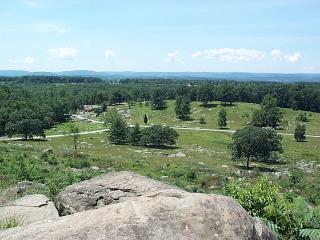
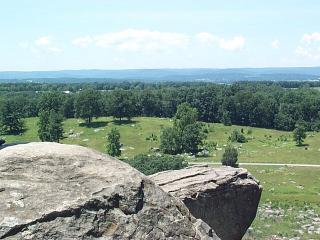
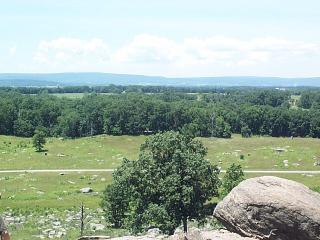
Behind the front row of trees on the right edge of this picture is an area known as the Wheatfield. It was a hotly contested area and at the end of the day, not only was the wheat that was ready for harvest trampled, but bodies of 4000 men lay where they had been trampled by the grim reaper.
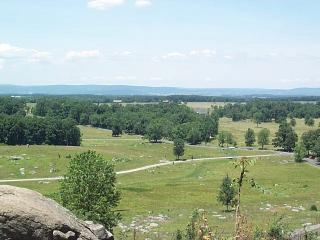
Seminary Ridge is visible as the row of trees in front of the mountains.
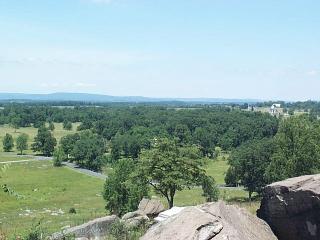
By the end of the day Federal General Sickles' Third Corps had been driven back, including the reinforcements that he had received from the 2nd and 5th Corps. Confederate General Longstreet's 1st Corps, short one of it's three divisions, had done a remarkable days work. But still Federal forces held the high ground of Cemetery Ridge and the Round Tops.
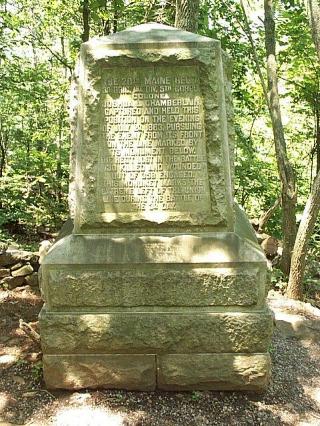
I had hoped that I could go into this project with a unbiased attitude, but when I look back on the pictures that I took I begin to realize that I am a Northerner. This one is a case in point. This is the Monument on Big Round Top to the 20th Maine and the position that they held through the end of the battle. There is another monument not far from this one nearly at the summit of Big Round Top to the Alabama Regiments. I didn't photograph it. I think that at the time I rationalized it as it being in the shade. But perhaps it was my northernness. The thing that really struck me about the monument to the Alabama Regiments was its size. Its a granite spire that's at least 20 feet tall. It must weigh many many tons. How did they get it up that steep rocky tree covered slope in the 1880s? There were no internal combustion engines, no air lift by helicopter, only horse and man power. Whew! I get tired just thinking about it.
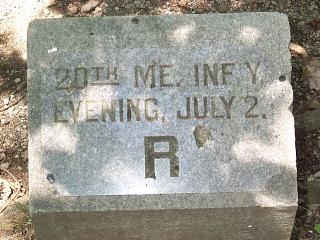
Every Regiment that was present at the battle has a marker showing the right and left ends of it's position. This is the right marker of the 20th Maine on Big Round Top.
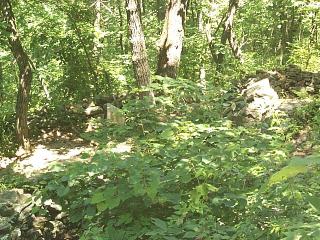
With my back to their main monument looking north at the right end of Chamberlain's 20th Maine breastworks. In the center of the picture is the right end marker.
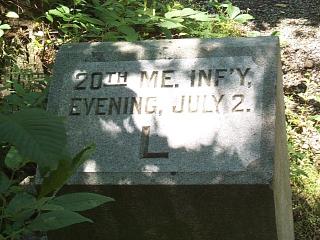
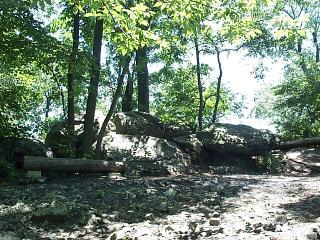
The summit of Big Round Top.
| 
